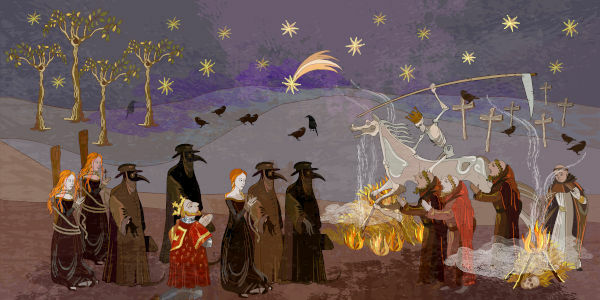Mexico's independence process marked the breaking of the colonial pact in one of the most important Spanish possessions on the American continent. As a region with a strictly rural economy, Mexico had a large part of its population involved in such activities. The crisis installed by the Napoleonic invasions promoted a breach in which the first uprisings were organized.
Despite having interests in the independence process, the Creole elite (children of Spaniards born in America) feared that the organization of a revolutionary process to mobilize the popular layers in defense of the expansion of political, social and economical. However, the arrival of the Napoleonic administration, instructed by Enlightenment ideals and the return of the old model Hispanic colonial rule, with the fall of Napoleon Bonaparte, was responsible for preparing the first movements of the war.
In 1810, the parish priest Miguel Hidalgo y Costilla rehearsed a first revolutionary movement. Defending the end of colonial relations and the return of lands to indigenous populations, Hidalgo mixed anti-colonial ideas and reformist proposals within the movement he organized. Imbued with such proposals, he called on Indians and mestizos to fight the Spanish government. Supported by these groups, the Hidalgo movement persecuted the gachupines (Hispanic elite) and the criollos, considered by the popular their greatest repressors.
The movement reached great proportions and a real war against the representatives of the elite had broken out. With the support of Spanish colonial troops, the revolt was controlled and Hidalgo was arrested and sentenced to death. In 1812, the priest José Maria Morelos organized a new popular uprising where the limits of the new social order defended were strongly opposed by a minority holding possessions and rights. Paying attention to the strength of the independence movement, the Crown itself undertook to order the process.
Representing the colonial powers, Augustín Itúrbide implemented a political reform project that became known as Plano Iguala. On such a proposal, Mexico became an independent monarchy. On the political plane, criollos and gachupines would have the same political rights. The Catholic faith and the former exclusionary agrarian configuration would be reaffirmed by this government.
After proclaiming the country's independence, Mexico was ruled by Iturbide himself, under the title of Emperor Augustín I. Unsupported by the country's burgeoning republican movements, Augustín was soon deposed and assassinated. In the year 1824, the country became a republic presided over by General Guadalupe Vitória.
Without reaching the popular ideals of the first revolutionary demonstrations, Mexico only witnessed the expansion of the political autonomy of the elites that already dominated the region. With this, the process of exclusion, poverty and economic dependence were also responsible for other uprisings such as the Mexican Revolution of 1910.
Source: Brazil School - https://brasilescola.uol.com.br/guerras/guerra-independencia-mexico.htm


